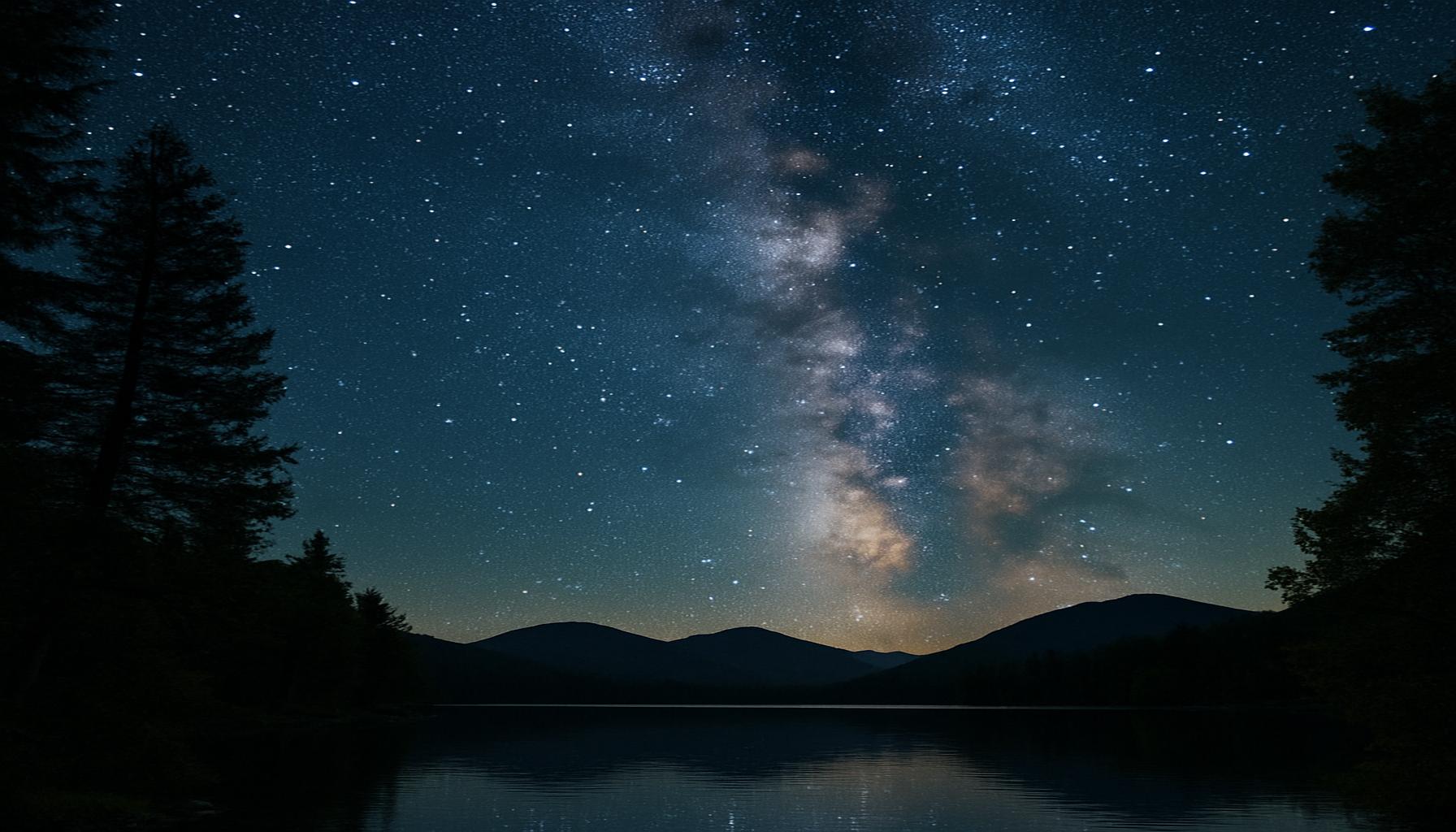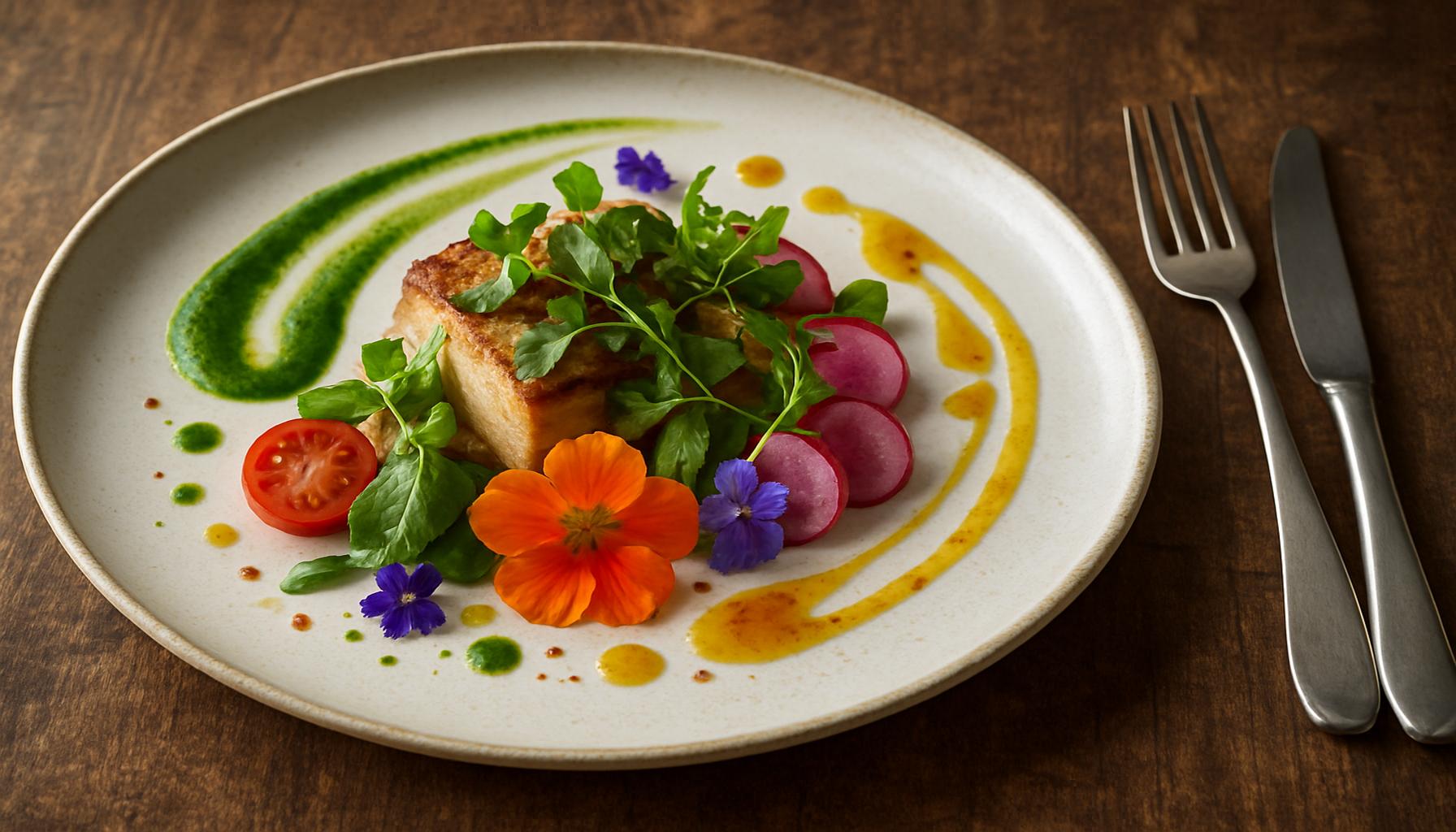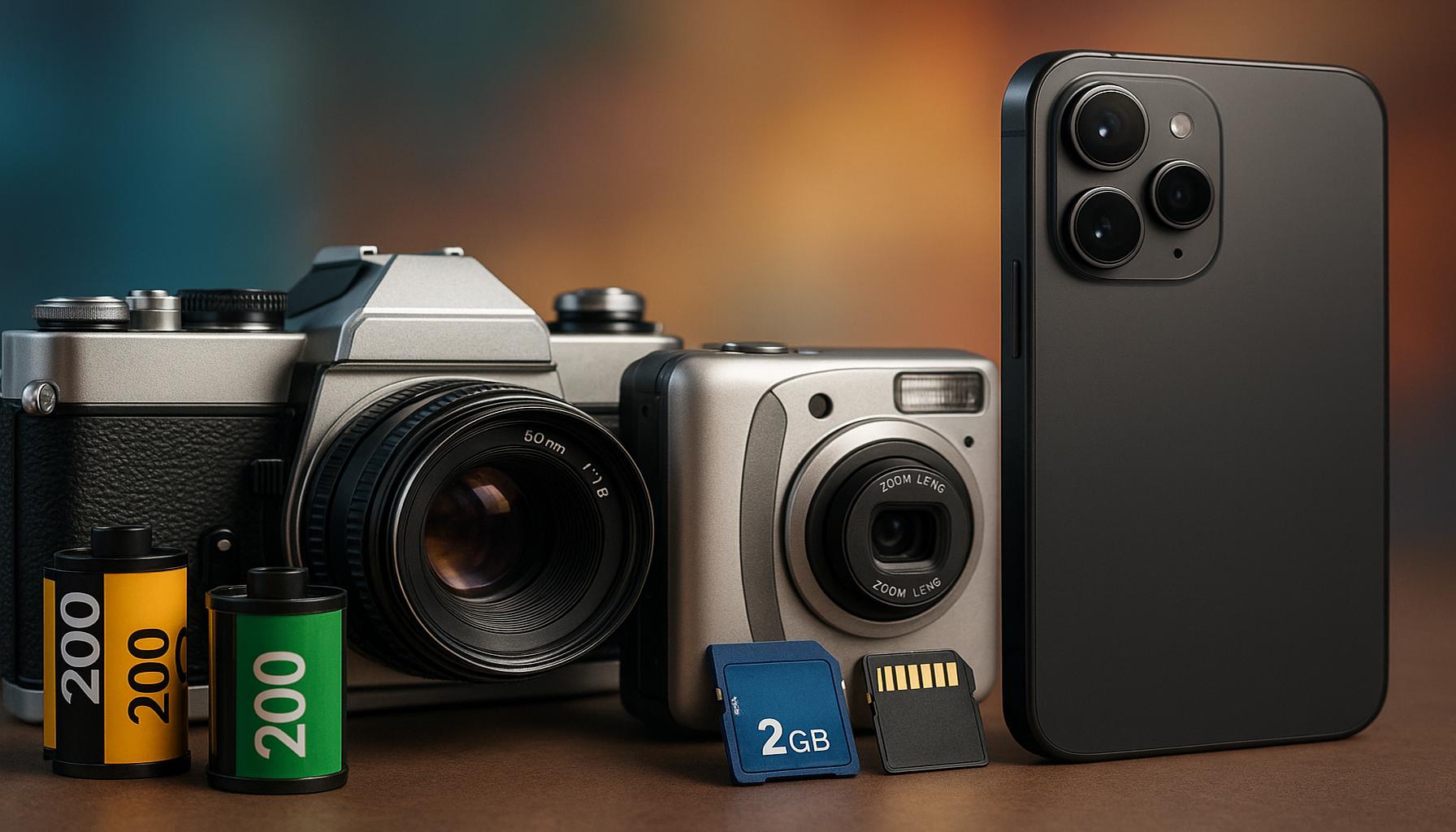Photography in the Era of Artificial Intelligence: Challenges and Opportunities for Visual Creativity
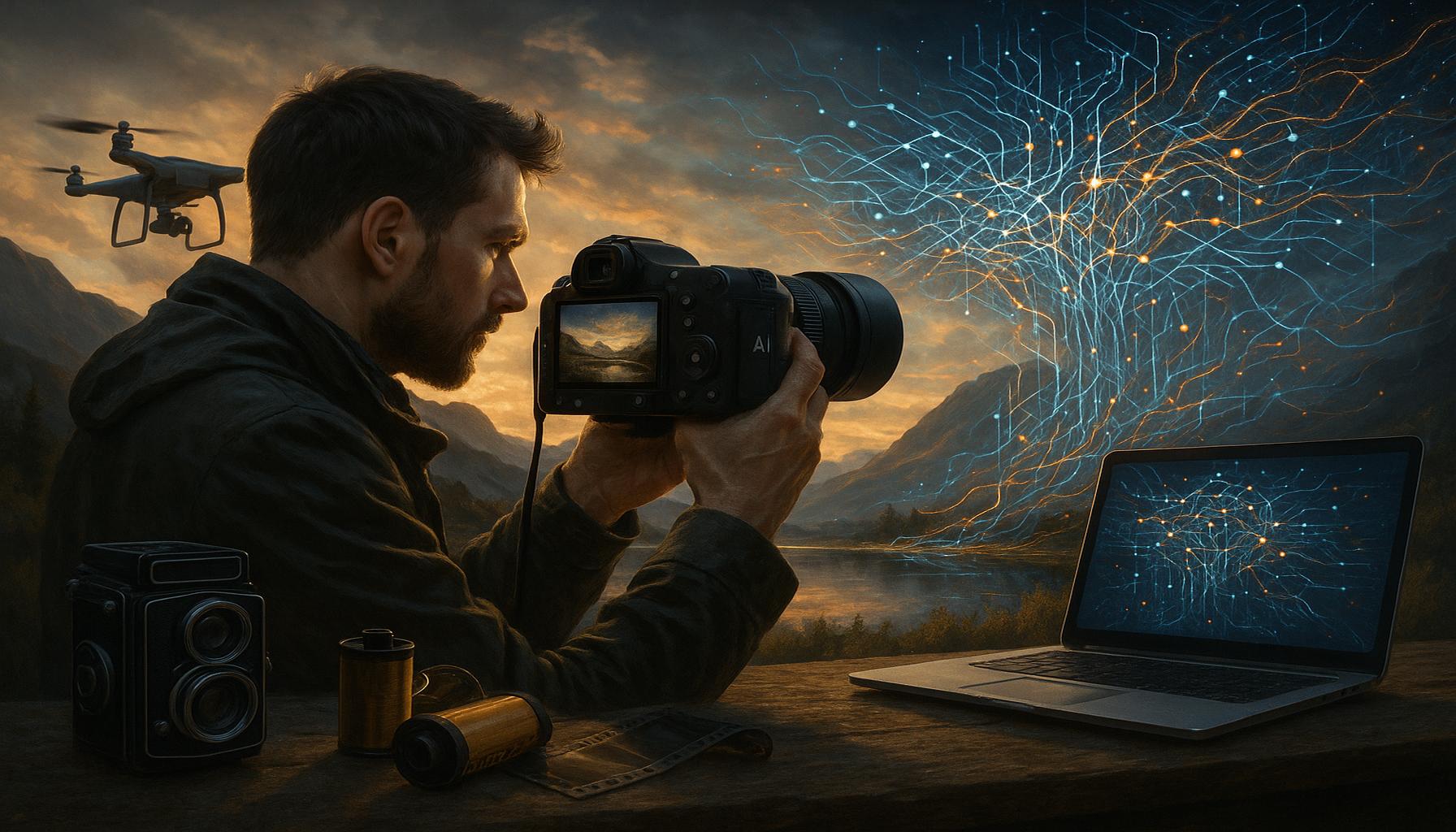
The Digital Evolution of Photography
As technology continues to evolve, photographers find themselves at a pivotal crossroads where photography and artificial intelligence converge. This meeting point is transforming the photographic landscape in ways that are as exciting as they are challenging. With innovations emerging rapidly, understanding the implications of these advancements has become essential for both amateur and professional photographers alike.
Enhanced Editing Capabilities
One of the most significant contributions of AI to photography is the enhancement of editing capabilities. Traditional post-production often involves hours of meticulous work, but AI-powered software like Adobe Lightroom and Luminar AI are revolutionizing this process. They can automatically adjust exposure, contrast, and color balance, allowing photographers to achieve professional-quality results in a fraction of the time. For instance, a photographer shooting a wedding can now focus more on capturing special moments rather than spending hours on tedious edits. This not only improves productivity but also allows for a greater artistic focus.
Automated Image Recognition
Another remarkable application of AI is in the realm of automated image recognition. With tools like Google Photos, photographers can now tag and categorize their images with incredible accuracy and speed. By analyzing the visual content, these tools can organize hundreds of photos by themes such as portraits, landscapes, or even by specific events. This advantage is particularly beneficial for professional photographers who maintain vast portfolios, as it minimizes the tedious task of manual sorting, enabling them to organize and access their work with ease.
Creative Assistance
AI doesn’t just streamline processes; it also sparks creativity. Programs powered by AI can suggest innovative compositions and color palettes tailored to the specific mood or subject of a photograph. For example, platforms like Runway ML allow photographers to generate entirely new images using neural networks, pushing the boundaries of creative expression. This collaborative relationship between the artist and AI can lead to the creation of unique artwork that might not have been possible through traditional methods alone.
The Flip Side: Challenges of Integration
However, the rapid expansion of AI in photography is not without its complications. A primary concern is job displacement. As automation increases, the fear arises that traditional photography jobs may diminish in demand. While some photographers embrace AI as a tool that enhances their capabilities, others worry it might undermine the need for human creativity and intuition.
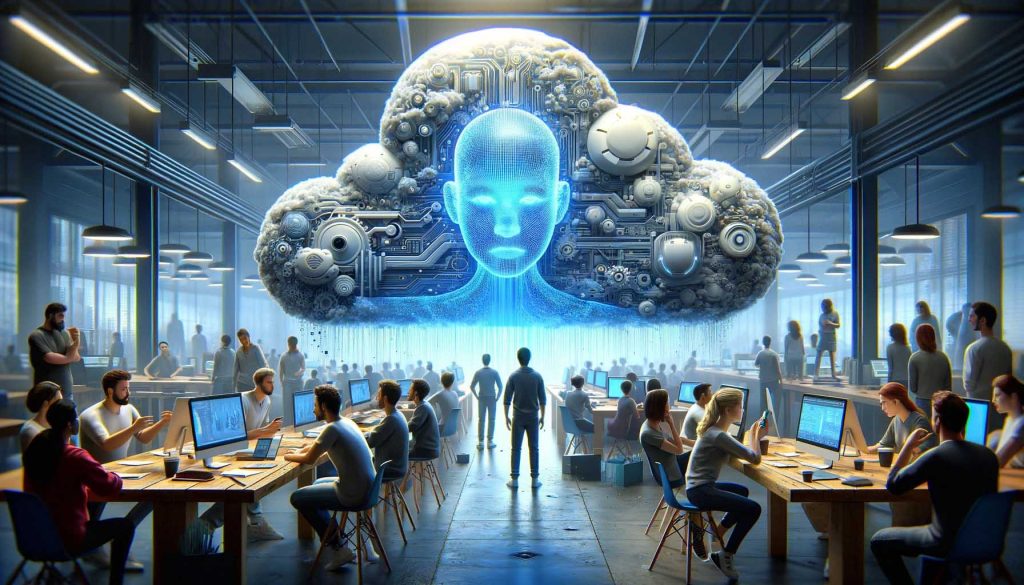
Moreover, ethical considerations take center stage as well. The question of copyright and ownership of AI-generated imagery is pertinent, creating a murky legal landscape. For instance, if an AI generates an artwork based on a photographer’s style, who claims ownership? Such questions are vital for photographers to ponder as they work alongside these technologies.
Finally, authenticity comes into question as the divide between human artistry and machine-generated work increasingly blurs. Audiences may find themselves grappling with the implications of appreciating work that is not purely human-crafted, steering conversations about originality and creativity.
In conclusion, as we continue to explore the intersection of AI and photography, it becomes clear that this dynamic relationship is reshaping artistic expression. Photographers must adapt to these advancements, embracing both the opportunities and challenges they present. Understanding the implications of this fusion of art and technology is essential for navigating the evolving landscape of visual creativity in the United States and beyond.
Dive Deeper: Click here to uncover the beauty of sustainable crafting
Redefining the Photographer’s Toolkit
The introduction of artificial intelligence into the world of photography is akin to a digital renaissance, providing tools that redefine what it means to capture and create. As photographers integrate AI into their practices, the traditional toolkit is being reimagined through a technological lens. AI-driven applications are not just assistive; they are becoming essential components of the creative process.
Intelligent Cameras
Today’s intelligent cameras are equipped with advanced algorithms that enhance shooting practices. From automatic focus adjustments to scene recognition capabilities, these technologies can analyze and interpret scenes in real-time, significantly improving the quality of the images captured. For instance, some cameras can detect smiles and trigger shooting, allowing photographers to seize fleeting moments effortlessly. This intuitive technology aids not just hobbyists but also seasoned professionals aiming to capture the perfect shot without delay.
Smartphone Innovations
The rise of smartphone photography also exemplifies the impact of AI on the medium. With devices like the latest iPhone and Google Pixel incorporating AI-enhanced features, photographers can shoot with an array of sophisticated editing tools built right into their mobile devices. Features such as night mode, portrait lighting effects, and real-time HDR processing allow users to produce stunning imagery without the need for extensive post-production. As a result, the accessibility of photography is being reshaped, enabling anyone with a smartphone to delve into creative pursuits.
The Impact of AI on Stock Photography
Furthermore, AI is influencing the realm of stock photography, making it easier for creators to find the images they need. AI technologies, such as deep learning, enable stock photo platforms to auto-tag images based on their content, improving search functionality. Photographers can leverage this innovation by contributing to stock libraries, thus gaining exposure and generating income while efficiently reaching their target audience. As the demand for visual content surges, photographers who can adapt their work for these platforms stand to benefit significantly.
Challenges in Adapting to AI Technologies
Despite these benefits, the incorporation of AI into photography brings along several challenges that must be addressed. First, the high learning curve associated with new technologies can be daunting. Photographers accustomed to traditional methods might struggle to embrace the digital shift, with AI tools that often require technical knowledge and proficiency. Additionally, the necessity of continuous learning becomes paramount, as existing technologies evolve at a breakneck pace.
Moreover, the proliferation of AI in photography raises questions regarding standardization in visual styles. As photographers utilize similar AI tools and applications, there is a risk of visual homogenization in the market, wherein unique flair and personal styles could be overshadowed by algorithmically generated aesthetics. The challenge for photographers then becomes balancing the use of AI while maintaining their artistic authenticity.
- Emergence of AI-driven tools for enhanced shooting and editing.
- Smartphone innovations expanding creative possibilities on the go.
- AI’s role in transforming stock photography and accessibility.
- Challenges in adapting to new technologies and maintaining artistic identity.
As photographers navigate these terrains, understanding the intricate balance between leverage and creativity is critical. The evolving dialogue surrounding AI’s impact on photography invites artists to contemplate their creative identity in this new era, pushing the boundaries of what is possible within the visual arts.
Photography in the Era of Artificial Intelligence: Challenges and Opportunities for Visual Creativity
The intersection of photography and artificial intelligence (AI) is transforming the way visual creativity is expressed and consumed. As AI continues to evolve, it presents both challenges and opportunities that photographers and artists must navigate. In this dynamic environment, understanding the balance between the two is critical for leveraging technology while preserving the authenticity of artistic expression.
On one side of the spectrum, AI tools can enhance the creative process, providing capabilities that were previously unimaginable. For instance, AI algorithms can analyze vast amounts of visual data to suggest composition improvements or filter settings tailored to a specific artistic vision. This not only empowers photographers to push the boundaries of their creativity but also helps them to produce striking imagery that captures viewers’ attention. Moreover, AI-powered editing software assures precision and efficiency, allowing artists to spend more time conceptualizing rather than editing.
However, the role of AI in photography raises important questions about the art form’s future. As more images are generated or altered by AI, there are concerns regarding originality, authenticity, and the potential devaluation of human-made art. The reliance on algorithms could risk homogenizing visual styles, reducing the richness that comes from diverse human perspectives. A critical dialogue is emerging within the creative community about what it means to be a photographer in this AI-dominated landscape. Are we merely curators of technology, or do we still hold the creative reins?
As photographers adapt to new technology, they also have the unique opportunity to blend human emotion and AI analytics. The challenge lies in finding a harmonious balance: using AI to enhance creative output while ensuring that the human touch remains at the core of visual storytelling. By embracing this technological evolution, photographers can discover new realms of creativity that challenge traditional norms and redefine the parameters of their art.
| Advantages | Characteristics |
|---|---|
| Enhanced Creativity | AI tools provide innovative suggestions and editing options, allowing for unique artistic expression. |
| Efficiency | AI accelerates the editing process, enabling photographers to focus on concept rather than mechanics. |
The evolving relationship between photography and AI invites exploration and innovation. Photographers must not only adapt to new tools but also strive to amplify their unique voice through these advancements. As we navigate this crossroads of technology and artistry, it becomes increasingly important to continuously reassess the implications of AI on visual creativity. Each click of the shutter holds the potential for a new interpretation—one that reflects the endless possibilities of human-AI collaboration.
DISCOVER MORE: Click here to dive into the evolution of digital art
Emerging Trends and Ethical Considerations
As photographers adapt to the seismic shifts brought about by the integration of artificial intelligence, several emerging trends are beginning to shape the landscape of visual creativity. These trends not only showcase the potential of AI but also bring to light significant ethical considerations that can impact the industry and its creators.
The Rise of Generative Photography
One of the most exhilarating trends is the emergence of generative photography, where AI algorithms assist in creating new forms of artistic expression. These systems utilize existing photographs, art, and data points to generate wholly unique visuals that challenge traditional notions of authorship. For example, AI can remix images in ways that yield fresh perspectives, cooking up a digital cacophony of styles and themes. Artists such as Refik Anadol leverage machine learning to transform data into mesmerizing visual landscapes that challenge the viewer’s perceptions of reality.
AI and Collaborative Artistry
Furthermore, AI is paving the way for a new genre of collaborative artistry. Photographers can comb through an array of AI tools that aid in the ideation and planning phases of their projects. For example, software like RunwayML allows creatives to collaborate with AI in crafting symptoms of art that blend human intuition with machine learning. This way of working fosters a dynamic interplay between human creativity and artificial intelligence, offering photographers broader avenues for experimentation and innovation.
Ethics of AI in Photography
However, as the fusion of AI and photography grows, ethical concerns must be placed carefully on the radar. Issues such as intellectual property and image ownership are coming to the forefront as AI-generated visuals become more mainstream. A fundamental question emerges: Who owns an image created with the aid of AI? Should the photographer, the programmer behind the algorithm, or the AI itself receive credit? These concerns are compounded by the potential for AI to generate images that might inadvertently exploit unlicensed works, leading to a murky future for artists reliant on copyright protections.
AI’s Role in Social Responsibility
Moreover, AI-driven photography can also play a role in raising awareness around social issues. For instance, by utilizing AI-generated imagery that highlights climate change or social justice, photographers have the opportunity to create compelling visual narratives that captivate audiences. These narratives leverage the power of AI to synthesize vast data to reflect societal challenges in a way that sparks conversation and encourages engagement.
- The emergence of generative photography as a new art form.
- AI fostering a collaborative approach in creative processes.
- Growing ethical concerns around ownership and authenticity.
- Utilizing AI for social responsibility and awareness campaigns.
As the world of photography continues to evolve, the interplay between AI technologies and artistic expression is poised to redefine visual creativity. With each advancement, photographers face an ongoing journey of adaptation and ethical contemplation essential for navigating these unprecedented times.
DISCOVER MORE: Click here to learn about collaboration in music
Conclusion: Embracing the Future of Photography
The evolving synergy between artificial intelligence and photography presents both remarkable opportunities and significant challenges that photographers must navigate. As we witness the rise of generative photography and collaborative artistry, the boundaries of visual creativity are expanding. Photographers now have the chance to explore innovative pathways, utilizing AI as a partner in their artistic endeavors. This unique collaboration facilitates a rich fusion of human imagination and machine efficiency, opening doors to unexplored realms of expression.
However, these advancements are not without their complexities. The rapid evolution of AI technologies brings forth crucial ethical considerations, particularly regarding image ownership and copyright. As AI-generated content permeates the visual landscape, the fundamental questions about authorship demand ongoing dialogue within the creative community. Addressing these issues will be essential to ensure that artists retain their rights while promoting a sustainable future for photography.
Moreover, the application of AI in photography can enhance social responsibility. By harnessing the power of AI to create impactful visual narratives on pressing societal matters, photographers can play a crucial role in raising awareness and driving change. This dual responsibility of innovation and advocacy is a testament to the transformative potential of photography in our increasingly digital world.
In conclusion, as the integration of AI into photography deepens, it invites a reexamination of traditional practices while inspiring new forms of creation. Photographers must embrace this era of change with open minds, leveraging the opportunities presented by artificial intelligence while remaining vigilant in addressing the ethical complexities it introduces. The journey ahead promises to be both exciting and challenging, ultimately redefining the art of photography for future generations.

